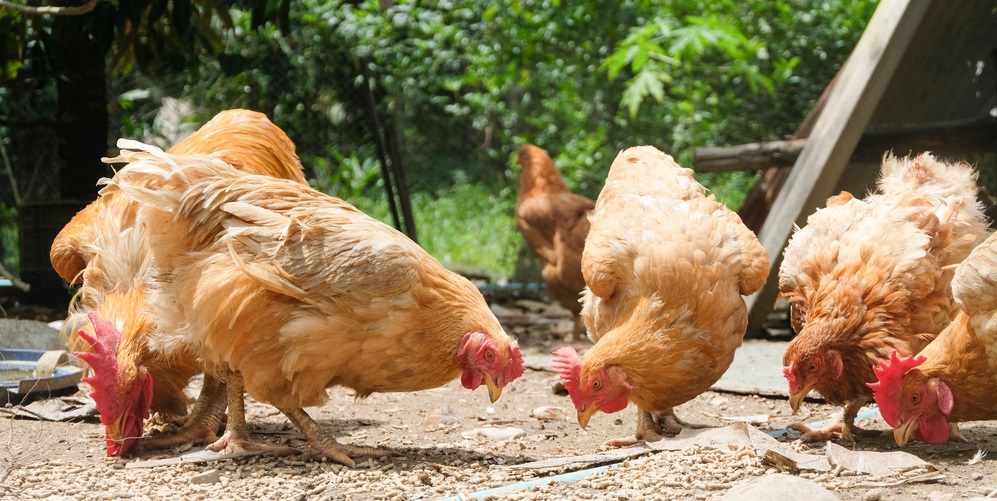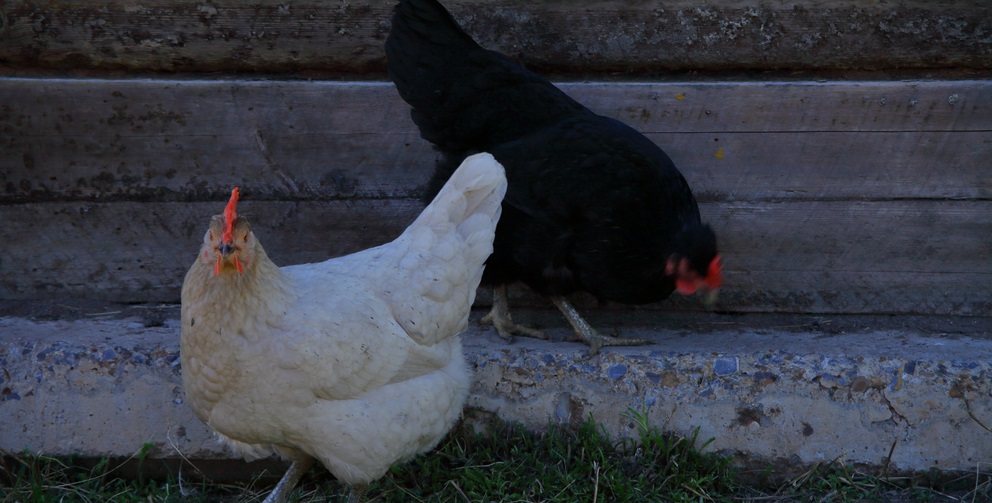You do your best to keep your flock healthy and happy, but despite your best efforts as a chicken keeper, wounds happen. So, how can you care for chickens as they recover from wounds? In this guide, we’ll go over the best practices for treating and monitoring chicken wounds.
Assembling Your Chicken First Aid Kit
In order to treat a wounded chicken, you’ll need the proper supplies.
An antimicrobial cleaning agent is the foremost part of your toolkit, as it can help prevent wounds from becoming infected.
- Antibiotic sprays can help to reduce wound infection, but keep in mind that you’ll need to follow the manufacturer’s recommendation and impose an egg withdrawal period during which you pause eating and selling the affected hen’s eggs.
- Vetericyn Plus Antimicrobial Poultry Care Spray is an ideal choice since it’s specially formulated to treat and clean poultry wounds without the antibiotic agents that require an egg withdrawal period.
Beyond a cleaning agent, stock your first aid kit with the following items:
- Tweezers for removing debris from the wound
- Scissors and medical gauze to treat and dress wounds
- Epsom salt for a cleansing bath (if needed)
- Eyedropper, powdered baby bird food, and vitamins to feed resistant hens
These will help you stay prepared for a wide variety of injuries.
Treating Wounds
If a wound appears to be outside your scope of knowledge and expertise, the first step is calling your local veterinarian.
However, as you gain experience as a chicken keeper, you’ll be more and more comfortable addressing common wounds with your first aid kit.
After you notice a pecking wound or other minor injury, take the following steps.
Step 1: Isolate
The most important thing to do is separate the wounded chicken from the flock.
- Separating the injured hen from the flock will give her time and space to heal fully before returning to the group.
- Make sure the affected chicken has enough room in their new space to eat in one place and relieve herself in a separate location.
If you keep roosters, the same applies.
Step 2: Treat Injury
Next, inspect and treat the wound.
- Just as with human injuries, it’s essential to control any bleeding. This means applying pressure to any open wound found on the injured chicken and wrapping the wound with gauze until the bleeding stops.
- Once bleeding has stopped, apply an antimicrobial spray. Avoid blue or purple antiseptic sprays as they will attract attention to the wound from other chickens once they are placed back with their flock. This could potentially make them a target for unwanted pecking and leading to further pecking sores for the chicken.
- If the wound appears to be infected, call your veterinarian immediately.
Step 3: Provide Food and Water
During the chickens’ healing process, make sure that they stay hydrated and eat a regular diet.
If the chicken is refusing food or water while being treated separately from its flock, the eyedropper, vitamins, and powdered baby bird food are your go-to tools.
These will allow you to administer their food and water personally, ensuring the hen doesn’t dehydrate or starve while trying to heal.
Preventing Pecking Wounds
Once the chicken is healed and returned to the flock, how can you help prevent further injury?
There are several things that can be done to prevent pecking OF THE WOUND. from becoming too aggressive.
These include:
- Increasing the range each chicken has to roam
- Feeding the flock treats that are harder to eat, keeping members distracted from pecking one another
- Including multiple feeding and watering stations to minimize competition for resources
If you have roosters, increasing the number of hens per rooster leads to less aggression between the roosters.
The Antimicrobial Spray at the Top of The Pecking Order
While these tips may help reduce pecking injuries between chickens, they will not eradicate them altogether. Prevention is an excellent form of protection, but not a foolproof plan.
Understanding and implementing chicken wound care is the best way to care for your chickens. And the colorless Vetericyn Antimicrobial Utility Spray is an ideal way to keep wounds clean and sanitary without making injured hens future targets or requiring egg withdrawal.
You can even use it on your other livestock to address skin wounds.
At Vetericyn, we care about the health of your flock. Check out our blog to read more animal husbandry tips ns, and discover new tools for ensuring your feathered friends stay in good health.
Sources:
- Knoji. How to Heal Pecking Wounds on a Chicken. https://knoji.com/article/how-to-heal-pecking-wounds-on-a-chicken/
- Hobby Farms. Chicken First Aid: How to Treat a Sick or Injured Chicken. https://www.hobbyfarms.com/chicken-first-aid/

